Orchids in the photo: types and names of sophisticated beauties
It is difficult to take your eyes off a blooming orchid: it is simply mesmerizing. This beautiful creation of nature is a member of the large Orchid family, each plant in which is unique.
Content:
- Orchids: general information
- Lavish blooming phalaenopsis
- Wanda - queen of orchids
- Not a moody dendrobium
- Spectacular Cattleya
- Charming pafiopedilum
Orchids: general information
Any representative of the flora will envy the variety of flowers: 750 natural species and about 30,000 hybrids. Moreover, all orchids have their own flavor. Thanks to the achievements of breeding, they saw the light of day new types of amazing shades and shapes.
Orchids grow on all continents except Antarctica. They feel great in the tropics: they like humid air and temperature changes.
Until recently, flower growers did not really like this plant. It was considered demanding and unsuitable for home cultivation. Now the flower has consolidated its position: it is found on the windowsills of many dwellings.
Orchid shapes:
- The most common life form of orchids is perennial grasses.
- Shrubs and woody vines are much less common.
- There are specimens growing by almost 1 m.
- There are also miniature varieties reaching several centimeters.
Amazing orchid flowers characterized by an unusual and original shape... Considering them, different associations come to mind: someone will see a flying bird, a fantastic pattern, someone a starfish or an elegant shoe. They form inflorescences (racemose or spike-like), consisting of 2-3 peduncles. A plant with a single flower is very rare.
It is almost impossible to list all the shades of petals. Their palette is endless: from neutral to deep purple. Many species are known with colorful patterns on the petals. Orchids are decorated with stripes, specks and color overflows.
Some specimens are considered centenarians: they grow, bloom and reproduce for 70, or even 120 years.
The orchid was rightfully awarded the title of "Queen of Scent". She received such an award not for the persistence of the smell, but for its diversity. There are species that smell like lemon, rose, watermelon, cinnamon, and even coffee. The choice of orchids is so huge that everyone will be able to choose "their" favorite plant.
Phalaenopsis blooming generously
Plants are native to the tropics of India and Southeast Asia. Found on plains and mountains. The genus includes about 70 species of epiphytes. About 10 representatives of the genus and hundreds of hybrids are popular with gardeners, which have won love thanks to luxurious flowers and relative ease of growing.
The genus name is derived from two Greek words meaning "moth" and "likeness". Indeed, the shape of the inflorescences of these orchids is like a flock of bright insects.
Description of Phalaenopsis Orchid:
- Phalaenopsis is a monopodial plant. He has a very shortened shoot.
- Large leaves - tough, wide and shiny, with a pattern in some species. They form a rosette from which an airy rhizome and long peduncles develop.
- On a branching, arched flower shoot there are about 15 rather large (5-10 cm in diameter) spectacular orchids.
After the last flower has fallen off, the stem is cut a few centimeters above the node to which the lower shoot of the inflorescence was attached. Such actions accelerate the development of the second peduncle. Before the orchid blooms, it is recommended to fix it with a support. Flat flowers plants - rounded with a three-bladed lip. Their palette ranges from white to hot pink.
There are green, lilac, orange and yellow representatives of the genus.
Orchids delight the eye with colors in all seasons. The plant does not have a specific dormant period: it throws out flower shoots several times a year.
Phalaenopsis, which are prized for their exquisite aroma:
- Nice (adorable)
- Schiller
- Mary
- Deerhorn
- Modest
- Luddemann
- Giant
Phalaenopsis is a genus of orchids with bright inflorescences that resemble exotic butterflies.
Wanda - queen of orchids
Occurs on flat and mountainous areas covered with tropical forests (Sri Lanka, New Guinea, Australia, Asia, Philippines, Himalayas, Thailand, Burma, Indonesia, Java island). The flower is sought in the crowns of trees (epiphyte) or on rocky slopes (lithophyte).
Genus name of Sanskrit origin. The word "wanda" was used by the Hindus. In botany, the term was established by Sir William Johnson, who applied it to this orchid variety in his published work. Wanda is a graceful aristocrat who is famous for her rare shade of flowers.
Flower characteristic:
- Under natural conditions, the flower is a large specimen, reaching a height of 1 m.Instead, it does not exceed 80 cm.
- On a strong, upright stem, lance-shaped or cylindrical leaves are located opposite in two rows. Gray-green long aerial shoots appear from their sinuses.
- Peduncles grow from here. Each of them has several inflorescences. They are multi-flowered racemes consisting of flat flowers on erect stems. They have a weakly expressed fleshy lip, rounded or narrow petals.
- Wanda is a fragrant, vibrant orchid. Large flowers are both variegated and monochromatic. The palette is white, pink, blue, purple.
Popular types of wands:
- Blue. On a strong, erect stem, dark green leaves are located. The long inflorescences are formed by large blue flowers. Each brush contains from 12 to 20 pieces.
- Sander. Long belt-shaped foliage. Peduncles emit pink and white clusters of 10-15 flowers. Sepals have green-yellow veins.
- Rothschild. It blooms all year round, decorating the interior with soft blue orchids with purple veins.
- Chess. Leaves are cylindrical, leathery. Inflorescences are distinguished by a light golden yellow tint.
- Rolled. Flowers are large, pinkish white or reddish. The lateral lobes of the lip are yellow at the base, decorated with red dots.
Not a moody dendrobium
The genus consists of 1600 plants belonging to epiphytes and lithophytes. The name translates as "tree dweller". Its representatives are found on the Polynesian islands, the south and southeast of Asia, Australia, on the islands of the Indian and Pacific Oceans, and the islands of Fiji. Artificial and natural hybrids are derived from dendrobiums. In Asia, they are used to produce orchids, which are supplied to the flower market.
Dendrobiums are distinguished by a huge variety of sizes: there are tiny specimens with pseudobulbs (1 cm in diameter) and giants that conquer a height of 1-1.5 m. The pseudobulbs of different species themselves differ in shape.
There are plants with 3-5 leaves on the tops of pseudobulbs and completely devoid of foliage. Some dendrobiums shed their green mass at the end of the growing season in the first or second year. Botany knows evergreens that keep leaves on pseudobulbs for 3-4 years. The racemose inflorescences are lateral and apical. Flowers of different types differ in shape, size and palette. The predominant shade is yellow. Less common are white, green and red.Some orchids have a pleasant scent.
Dendrobium noble and Dendrobium phalaenopsis are especially popular among lovers. This attitude is due to the relative ease of care after them.
Other "favorites" among dendrobiums:
- Lindley. A small plant with small yellow flowers.
- King. Height - up to 30 cm. Lanceolate leaves are placed on a rigid stem. The palette ranges from neutral to purple.
- Densely colored. An upright plant with leaves at the top. The shade of colors is from yellow to orange.
- Parisha. The species is interesting for the heterogeneous color of the buds.
- Bactrian. In the inflorescence - from 8 to 20 purple-crimson, white or purple-pink flowers.
Dendrobium has won universal love due to its undemanding care in comparison with other types of orchids.
Spectacular Cattleya
Especially prized for its beauty and fragrance, the orchid grows in Central and South America. The genus is named after William Cuttley, a pioneer in the cultivation of representatives of the Orchid family. This European managed to grow a flower far from its natural range, from which its widespread reproduction began.
The habitat of different species can be very different. Some specimens love warmth and high humidity, while others coexist with cacti in the scorching sun. There are cattleyas that use branches and tree trunks as dwellings. Other species are exploring mossy rocks.
Science is familiar with 60 species of Cattleya that live in the natural environment.
Also, breeders, through interspecific crossing, gave birth to many hybrids.
All orchids of the genus are divided into two groups:
- The first includes powerful Cattleya with one leaf in a pseudobulb. The small number of flowers in the inflorescence is compensated by their large size.
- The second group is represented by two-leaved orchids. They are much smaller than single-leaved ones, but attract more lush inflorescences and a rich palette.
A distinctive feature of all Cattleya is the beautiful shape of the flowers, their rich tone and luxurious texture. The wide, brightly colored lip especially attracts attention.
Famous Cattleyas:
- Ekland. The smallest orchid in Brazil. Flowers - olive shade with small dark purple specks.
- Percival. The mauve orchid is native to Venezuela. Blooms from December to January.
- Bowling. The most common shade is mauve. The inflorescence is formed by 5-15 flowers with a diameter of 4-5 cm.
- Big. Lavender or lilac inflorescence with purple-violet veins consists of 3-15 flowers.
- Lipped. There are few flowers in the inflorescence. The diameter of each is approximately 15 cm. The palette is varied - from pink to pale yellow.
The popularity of Cattleya among gardeners is due to their high decorative effect and pleasant smell.
Charming pafiopedilum
The second name of the orchid is "lady's slipper". It is formed from two Greek words: Paphos - the island where the goddess of beauty was born and pedilon - sandal. This name was given to the plant thanks to the lip, which is very similar to a shoe.
There are 100 varieties of terrestrial or semi-epiphytic flowers in the genus. They are found in China, Laos, India, Vietnam, Indonesia, the Himalayas, Malaysia, and the Philippines.
They grow in humid forests, mountainous areas, on low elevations.
They cover the ground, peep out of rock crevices, rarely braid tree crowns. Pafiopedilum have no pseudobulbs. The plant consists of leaves of various shapes and colors, collected in a rosette. Large flowers of many species remain open for a long time. In different specimens, they differ in palette, shape and size. The texture is dense, the surface is shiny or covered with light fluff.
Representatives of the genus are divided into 3 main groups. The classification is based not only on differences in appearance, but also on the characteristics of care. The first group includes plants that love warmth, have variegated foliage and rounded flowers. Orchids with narrow elongated petals, requiring coolness, were combined into the second group.Variegated or green papiopedilums with a variegated shoe are representatives of the third group.
Breeders have been working with orchids from this genus for over 100 years. The fruit of their work is thousands of new hybrids. For some species, crossing is not particularly difficult. Plants are often found in nature that have appeared as a result of such spontaneous pollination.
Well-known species and hybrids of papiopedilum:
- Great
- Sander
- Dear
- Horny
- Spicer
- Sukhakula
Paphiopedilums are different from other species orchids with the shape of a lip resembling a slipper. Flowers from the Orchid family are among the most harvested and strictly protected plants in the world. They attract connoisseurs with their beauty, mystery and romantic charm.
More information about the types of orchids can be found in the video.



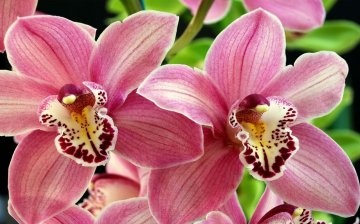
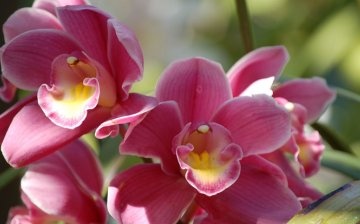


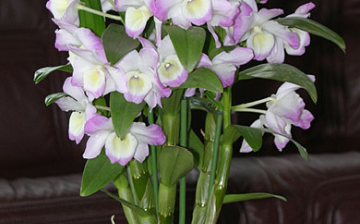
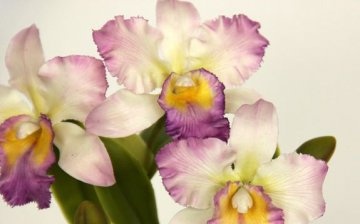
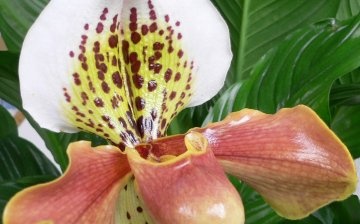









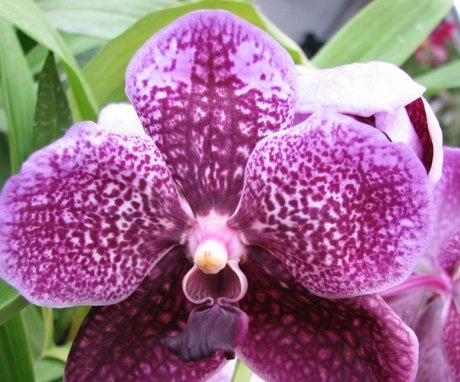
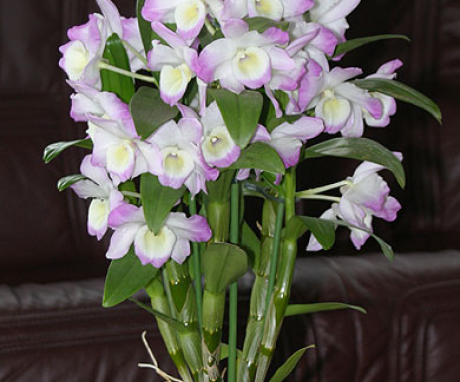
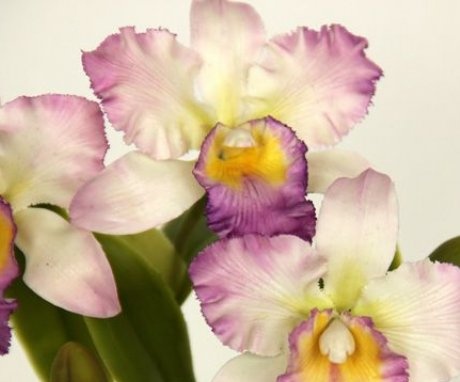

I love the orchid flower. There are already more than 10 varieties at home and this is not the limit. I saw in the photo and read in the article that I should also collect and collect. In leaving, I will not say that they are very whimsical - the main thing is not to flood them.
We have only one white phalaenopsis orchid flower growing at home. Once a year, or a little less often, he throws out a peduncle and up to a dozen, very beautiful, unusual orchid flowers grow on it. The plant blooms for a very long time, about a month. Once I tried a flower petal with my hand, but it looks more like a sheet of paper, not a living plant.